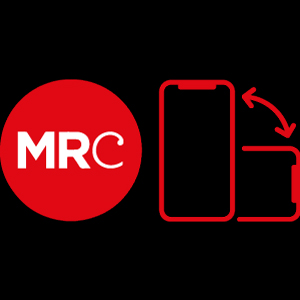Good afternoon.
I have been working for the Media Reform Coalition for a little over a year – I came to it as a media student with a background in campaigning, and it is primarily as a campaigner that I am speaking to you today. The principal thing I want to stress is the importance of building, and demonstrating, broad-based public support for media reform and media plurality from across the political spectrum. In order to do so in any sustainable way, we have to be prepared for resistance, particularly from the newspapers which dominate our national life. One of the ways in which I believe they will try to undermine us is by labelling media reform as an issue of the left, and therefore dismissing it serving sectional interests rather than in the national interest.
I will begin by discussing the Yes to Fairer Votes campaign for the referendum on the Alternative Vote in 2011, which I worked on as a regional organiser in north-east London, which is a very good example of a campaign which failed to anticipate and resist just this kind of labelling. I will then make some more general remarks about the uses and consequences of the left/right distinction, before outlining some lessons I believe we should take on board for campaigning on media reform in the future. Yes to Fairer Votes To begin with the AV referendum – the campaign was terrible, disastrously organised and managed, and a source of great frustration to those of us working and volunteering for it. Our failings were legion, but I want to focus here on our inability to escape the characterisation of being a group of ‘Metro lefties’ seeking to further our own interests. Resisting this was always going to be an uphill struggle – given that the referendum was the linchpin of the coalition agreement it was unsurprising that it was widely seen as a referendum on the Lib Dems, and this was compounded by a mainstream media who all but refused to see the issue outside of the lens of a two or two-and-half party politics. The debate was almost always discussed in terms of the short or long-term electoral gain that might accrue to the Conservatives, Lib Dems or Labour, which was compounded when the nonpoliticians we tried to put forward as spokespeople were refused a platform by most media. The campaign for AV was in many ways a poisoned chalice, and defeat was probably inevitable. However, our campaign made things worse for ourselves in the number of ways, particularly with regards to the ‘left’ labelling. For a start, our leadership and constituent groups were remarkably narrow. Most of our funding came from the Joseph Rowntree reform trust, a major donor to the Lib Dems, our campaign director was a Lib Dem peer, and our steering committee included members of three other organisations which received Joseph Rowntree funding. While even this narrow grouping was in fact more diverse than the No campaign, which was 99% Tory funded and run, by fronting Labour heavyweights like John Prescott and Margaret Becket the No campaign appeared to represent a broader cross-section of society than Yes. Our style and messaging reiterated a narrow focus on young, urban voters – for example, with our use of celebrities. Stephen Fry’s endorsement might have increased youth turnout by a fraction or two, but he certainly won’t have changed anybody’s mind, while Eddie Izzard, as the chair of the Conservative Yes campaign pointed out, was all very well for social media but to Tories he was just “a transvestite comedian and [they] were unlikely to accept advice from him”. In general, we appeared to be, and in many ways were, talking to ourselves. The impression of being a ‘metro left’ campaign was confirmed after the fact by the handful of places which did in the end vote yes – Cambridge, Oxford, Edinburgh, Islington, Camden, Hackney. So what could we have done differently? While the campaign was probably doomed from the start, there were some obvious tricks missed which could have mitigated our defeat, and put electoral reform in a stronger position today. First and foremost, we should have made far more use of UKIP and Conservative Yes. Both were sidelined until the closing days of the campaign, with Nigel Farage only wheeled out 10 days before we went to the polls, despite being willing to participate from the beginning. Polling at the start of the campaign showing that 30% of centre-right voters supported AV, but pretty much all of this was lost over the course of the campaign. It is hard to refute Ed West’s comment in the Telegraph that Farage was sidelined because of “the prejudice of the yes campaigners, for whom anyone who does not share their narrow set of beliefs is outside the communion of decency”. It is precisely because people like me find Farage’s views on pretty much everything else so objectionable that our agreement on the need for electoral reform needed to be shouted from the hills. More generally, we could have broken open the two-and-a-half party politics frame by making much better use of the other parties who were in favour – which was in fact everyone apart from the Tories and the BNP. On May 4th, the day before the vote, a Yes advert appeared with Farage alongside leaders of Labour, Lib Dems, SNP, Green party, Plaid, SDLP and Alliance. If this had been the central image throughout the campaign it would be much harder for news organisations to reduce the question to the advantage that Labour, Lib Dems or Conservatives could gain from it. It also could have presented a vision of a new kind of politics that could transform Westminster without evoking the cynicism and apathy of antipolitics. In short, we allowed an issue of democracy be categorized, and then dismissed, as an issue of the liberal left, and that this not only damaged the immediate campaign but also the prospects of electoral reform in the future. Given the anger and disaffection felt by many conservatives who feel betrayed by Cameron, the rising popularity of UKIP, and the diminishing prospects of ever getting a Conservative majority in the absence of the boundary review, now is the perfect time for electoral reform to become popular with those who identify with the right. Had Farage been more strongly associated with the AV campaign, he might now be making that case himself. Bridging ‘left’ and ‘right’ To clarify what I mean by coalitions of ‘left’ and ‘right’ – I don’t mean to imply that we should be heading for the centre ground, seeking weak compromises that end up pleasing nobody. And I also don’t mean to say that everyone really agrees with one another, or that we have moved ‘beyond’ right and left – many people, particularly older people, do identify themselves with these labels and major disagreements on many issues palpably exist. But in a number of areas, particularly those concerned with institutional and systemic change – from executive pay and corporate tax evasion to the Living Wage – there are clear, commonsensical majorities of the general public in favour of far more radical action than our major parties would ever think politically ‘realistic’. And in these cases it is often by deploying a left/right frame that the national press, intentionally or no, prevent this broad-based support from being made apparent to both citizens and politicians. A good example of this environmentalism, and particularly climate change. Despite the best efforts of John Gummer and Zac Goldsmith to make the case that conservation of the environment and political conservativism are a natural fit, ‘green’ is almost exclusively seen as a left issue. This is partly of course because of the Green party’s policies on social welfare, although their long-standing commitment to localism could equally be seen as having a small-c Conservative heritage. And the left characterisation is particularly acute when it comes to climate change – as pollster Leo Barassi, has put it, “climate change seems to have taken on a political meaning separate from anything to do with science of risk. Instead, it’s taken by many to represent a left-wing worldview justifying high taxes and dislike of business.” He therefore argues that polls which ask about the reality, cause or severity of climate change may in fact be measuring the extent to which people identify with left-wing values rather than the extent to which they would support action to mitigate global warming. His theory is supported by an Angus Reid poll from 2010 asking whether people were satisfied with the commitments to reduce carbon emissions made at the climate talks in Copenhagen. Remarkably, 62% of those who thought ‘global warming is a theory that has not yet been proven’ were in fact satisfied with our climate change commitments, while only 24% were dissatisfied. This suggests that there is a very widely shared desire for action which may be being obscured through a relentless left/right frame. In this context, the Guardian’s admirable persistence in covering environmental issues, not to mention pundits such as George Monbiot, may be undermining the case for action by reproducing the perception that this will serve sectional interests rather than the public interest. Environmental campaigners are increasingly aware of this problem and many are currently seeking and deploying alternative messages, such as green jobs, rather than leading with climate change. Lessons for media reformers So what lessons do I think we can learn as media reformers from this discussion of left and right? First and foremost, as I’m sure will be clear by now, I believe we must be extremely vigilant about the dangers of allowing the issue to be labelled as left-wing. The early warning signs of this tactic being deployed in relation to press regulation could be seen in the Daily Mail’s exposé of Leveson adviser David Bell shortly before the report was published. This, in their own words, “paint[ed] a picture of how a small, intertwined nexus of left-of-centre individuals… have sought to exert huge influence on the Inquiry”. An earlier Sunday Telegraph article about Hacked Off suggested that the group was left-wing and an instrument of the Labour Party, and Hugh Grant has felt the need to repeatedly emphasise that he is not a ‘leftie’. It is to the credit of Hacked Off that through the judicious use of spokespeople and their commitment to nurturing cross-party support within Parliament that this kind of critique has been less prominent than it might have been. Their own polling has found that, far from being an issue that falls on party lines, there is stronger support for an independent regulator amongst voters of all three main parties than among the population as a whole. While 78% of the general public wanted an independent regulator backed by law, 86% of LibDem voters and 80% of Tory voters were in favour. The key question for us is whether we can find a means of avoiding the left/right framing when it comes to media ownership and plurality. There are those who would claim that fixed limits on ownership, for example, are an inherently left-wing proposition, especially as the newspapers that would be affected are right-of-centre. Certainly in party political terms there is more hope of making headway with Labour and the Lib Dems, and the few Tory MPs who have expressed support have indicated that they believe themselves to be a very small minority within their party. However, given that pretty much the only submission to the Leveson Inquiry (other than our own) to give a detailed analysis of how fixed limits could be calculated and implemented came from Clare Enders of Enders Analysis – who is certainly not a leftie – we shouldn’t give up on the possibility of finding arguments that appeal to those who identify as right wing, such as breaking up oligopolies within markets. The very high levels of support for fixed limits on newspaper ownership in recent opinion polls – 76% in a Yougov/IPPR poll last summer – indicates that this kind of broad-based support does already exist, albeit ‘soft’ support on an issue which currently has low-salience which has to be built upon, not take for granted. Building broad-based support will require us to reach out to a wider range of civil society organisations and a willingness to form unusual and unexpected alliances. To take a few groups associated with the right are probably unhappy with news coverage today: the Countryside Alliance, who probably have a grievance about the lack of coverage of rural affairs in the national news; the Campaign for an English Parliament who repeatedly complain that, outside football, newspapers almost always use ‘Britain’ when they mean ‘England’; and Catholic groups, who would probably like to see more coverage of their social justice work, such as their role in setting up food banks, rather than just seeing their faith make the headlines in relation to paedophilia, abortion and gay marriage. Groups like these may not support fixed limits on media ownership, but may be willing to work with us on other issues of media plurality. It is certainly worth exploring whether this is the case. There are two issues in particular which I believe could bridge the left/right divide. One would be a campaign for media owners to be taxed domiciled in the UK. By focusing on tax status rather than nationality we should avoid the worst of the jingoism that will doubtless be evoked in some quarters, but we also shouldn’t be afraid of getting into bed, if briefly, with those whose principal concern is limiting the influence of ‘foreigners’. After all, they do have a point – it is absurd to allow the super-rich from all corners of the globe to exert such influence on our democratic life without requiring even the bare minimum of commitment that paying a personal tax bill entails. The second is to focus on local news provision, and in fact the basis of exactly the kind of broad-based coalition we need is already there in the bewildering array of groups assembled by Local Works, who brought together 120 organisations, from the Woodland Trust and the Association of Chief Police Officers to the Campaign for Real Ale, to push through the Sustainable Communities Act. For those of you unfamiliar with the legislation, it allows people to put forward proposals for changes to national law which will improve democratic inclusion and sustainability on a local level. The Sustainable Communities Act itself is the perfect tool to make certain changes that will benefit local news organisations, such as clarifying charity law to allow nonprofit news ventures to gain charitable status. Local news provision is most important in rural areas which are more likely to have Tory MPs, giving a strong starting point for cross-party support for measures to protect local news sources. To conclude: media plurality is an issue of democracy, and democracy has to be for all. If we are, or appear to be, serving a sectional interest or one part of the political spectrum, we will undermine our own case for action. Resisting this perception, which is likely to be foisted upon us by the dominant news titles as soon as we meet any kind of success, will require care and vigilance, but it is essential if we are to make apparent the very widespread support for measures to increase plurality that exists in Britain today. And it may make radical reform, rather than weak compromises, possible.


